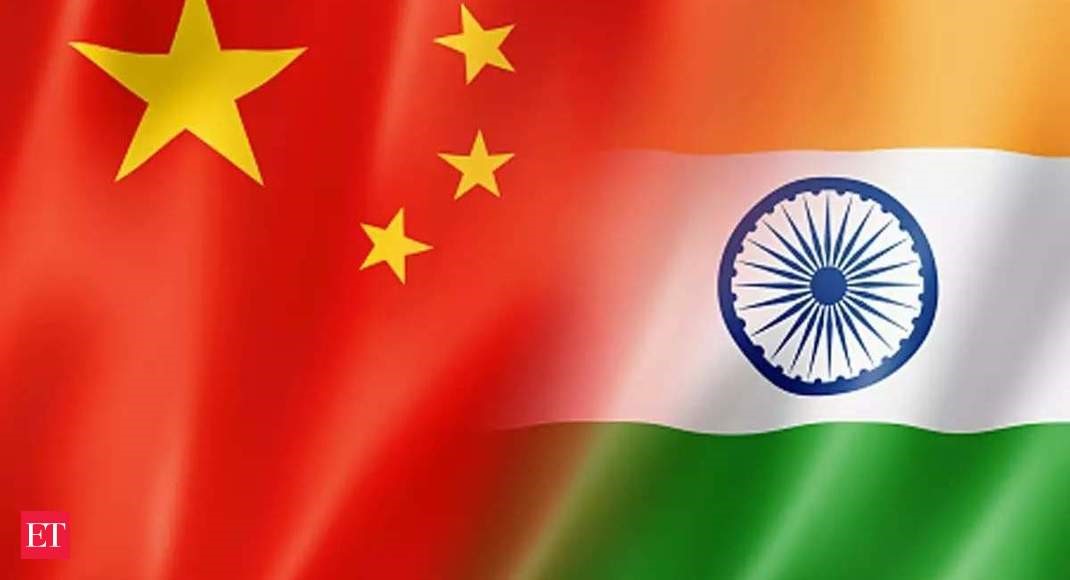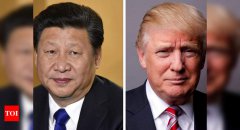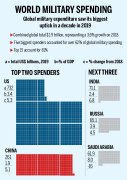VIEW: INDIA NEEDS TO RESET ITS RELATIONSHIP WITH CHINA DRASTICALLY
观点:重建印中关系迫在眉睫
VIEW: INDIA NEEDS TO RESET ITS RELATIONSHIP WITH CHINA DRASTICALLY
观点:重建印中关系迫在眉睫

The time has come for India to reassess, if not reset, its relationship with China, and not just in parts but in its entirety. The stand-off on the Ladakh border is only symptomatic of Beijing’s larger political disdain, which has, for years, refused to accept — if not proactively check — India’s growing profile. But now, the changing global conversation on China provides a whole new political context to fashion a fresh approach.
印度现在到了该重新评估,甚至重新评估与中国关系的时候,不仅是部分评估,更是整体评估。 拉达克边境的僵局只是中国更大的政治鄙视的征兆。多年来,中国一直拒绝接受印度(即使不是主动制止)日益增强的局势。 但目前,关于中国的不断变化的全球对话提供了一个全新的政治环境,从而形成了一种新的方法。
True, it’s not wise for India to get caught in a fight between the two major powers. The last time India was faced with such a situation, it chose the path of non-alignment. But it was the 1962 debacle at the hands of China that exposed the limitations of that policy, especially in a military conflict.
没错,印度陷入两个大国之间的斗争是不明智的。 印度上一次面临这种情况时,选择了不结盟的道路。 然而,正是在1962年中国遭受的惨败之后,特别是在军事冲突中才暴露出该政策的局限性。
The current build-up across the Line of Actual Control (LoAC) in Ladakh is quite serious. It’s bigger in size, wider in area of deployment, and likely to stretch longer compared to earlier stand-offs. Indian and Chinese troops are in direct sight of each other at four points — the closest in Galwan and Pangong Tso — but have moved up resources and deployed artillery across a larger length of the LoAC. In all, China’s People’s Liberation Army (PLA) has mobilized an estimated 5,000-plus troops, closing in on a division’s worth of resources. And, more importantly, unlike Dokalam, the dispute is on Indian territory.
当前跨越拉达克实际控制线的建设非常严重。 与早期的僵持相比,这次规模更大,部署范围更广,并且持续时间可能会更长。 印度和中国军队在四个地点可以直接看到对方(最邻近加尔万和班公错)。但是,印度和中国军队已经调集了资源,并在大范围武装部队中部署了炮兵。 总体而言,中国人民解放军已动员了约5千多名士兵,以一个师的资源为代价。而更重要的是,这与多卡兰的不同,争端是在印度境内。
There’s a key factor that distinguishes this stand-off. It’s not an Indian reaction to Chinese construction activity, but a Chinese reaction to India’s road-building effort. Much through 2000-10, China carried out hectic construction to consolidate its position, improve its access, and speed of deployment along the LoAC. On most occasions, India protested, but looked the other way.
区别于这次僵持的有一个关键因素。 这不是印度对中国施工项目作出的反应,而是中国对印度道路建设工作的反应。 从2000年10月起的大部分时间里,中国马不停蹄地进行建设,以巩固其地位,提升其准入和沿实际控制线的部署速度。 在大多数情况下,印度都提出了抗议,但是却对其视而不见。
As a result, over time, the power differential on the LoAC tilted, rather distinctly, in China’s favour. India began at the start of this decade, with construction gathering pace only in the past few years after the restructuring of the Border Roads Organization (BRO).
结果就是,随着时间的推移,实际控制线的势力差异明显偏向中国。印度在本世纪初开始的,在边境公路组织重组后的过去几年中,印度的建设步伐加快。
What we are witnessing is a heavy handed Chinese response to forcibly thwart Indian efforts to narrow that power differential.
我们正目睹的是,印度努力缩小势力差距,中国对此表示强烈反对。
Me-upmanship
高人一等(霸权主义)
In broader terms, this is China trying to deny India any sort of respectable parity on the LoAC, just like it tried to deny nuclear parity when it sought to block the India-US civil nuclear deal at the Nuclear Suppliers Group (NSG).
从广义上讲,中国试图否认印度在实际控制线上的任何可观的平等性,比如中国否认核均势并试图阻止印美在核供应国集团的民用核交易等。
Ensuring an ever-widening power differential with India is a strategic objective for China, and what’s happening in Ladakh is in keeping with that policy.
中国的战略目标确保是不断扩大与印度之间的势力差异,拉达克正在发生的事情与该政策保持一致。
It’s in this backdrop that India needs to look at the US-China stand-off. By all accounts, the decoupling process between these two powers has begun. US President Donald Trump signaled this with three decisions he took in one go, while most of China had hoped he would, at least, be incremental.
在这种背景下,印度需要考虑中美之间的僵持。 众所周知,这两种权力之间的解耦过程已经开始。 美国总统特朗普一口气做出了三项决定,以此表明了这一点,而中国大多数人则希望他至少会一步一步来。
First, ending Hong Kong’s special status with the US. Chinese banks conduct bulk of their international dollar business from Hong Kong, and this decision is bound to hurt. Second, to put curbs on Chinese students seeking research visas above the undergraduate level.
首先,取消香港在美国的特殊待遇。 中资银行在香港经营大部分国际美元业务,这一决定势必会受到伤害。 第二,禁止本科以上申请科研类签证的中国学生入境。
The order clearly states that any research students with links to PLA are at ‘high risk’ to be co-opted and are of particular concern. In the Chinese system, a wider interpretation of ‘association with PLA’ could translate as a large number of applicants. Either way, the move will bring Chinese students under tougher visa scrutiny.
该命令明确指出,与解放军有联系的任何科研学生都属于“高风险”,因此值得特别关注。 在中国体制中,“与解放军的联系”的更广泛的解释可能会转化为大量申请人。 无论哪种方式,此举都会使中国学生受到更严格的签证审查。
Third, of course, was to withdraw from the World Health Organization (WHO) during the Covid-19 outbreak.
第三,当然是在新冠状病毒爆发期间退出世界卫生组织。
This is a show of power by US, the principal financial contributor to WHO.
这有力地显示了美国是世卫组织的主要财政捐助国。
But that’s not all, the US brings with it a whole ecosystem of scientific research on public health and medicine.
但这还不是全部,美国带来了整个公共卫生和医学科学研究的生态系统。
Can China underwrite WHO, or replace the US? The answer is probably no, which is why the minus-China G7 or G10 meeting will be of significance.
中国可以承保世界卫生组织,还是取代美国? 答案可能是否定的,这就说明了G7或G10峰会没有中国具有重要意义的原因。
Clearly, the strategic churn around China has begun, and through its actions on the LoAC, Beijing is only forcing New Delhi to take a stand. And, perhaps, that’s an option India must examine because its measured ambiguity on China seems to have run its course.
显然,围绕中国的战略动荡已经开始,中国对实际控制线采取行动,只是在迫使印度表明立场。 而且,也许这是印度必须考虑的一个选择,因为印度对中国的模棱两可的做法似乎已成常态。
If China has decided to object to Indian efforts at seeking respectable parity on the LoAC, then these stand-offs are only going to increase. Largely because India is only going to hasten the pace of building its border and hinterland infrastructure along the LoAC.
如果中国已决定反对印度为在实际控制线上寻求可观的平等所做的努力,那么这些僵持只会愈演愈烈。 主要原因是印度只会加快在实际控制线上建立边境和内陆基础设施的步伐。
Stocktaking
盘点
Thus, it’s important that India also starts to have this discussion within its domestic polity. Unlike Pakistan, where there’s clear unanimity on public positioning, China tends to evoke different responses on the domestic front. But if the need is to reassess the nature of the relationship, then a reset of the political narrative may also be warranted.
因此,重要的是,印度也必须在其国内政体中开始进行这一讨论。 这与巴基斯坦的公开立场很明显不同,中国往往在国内方面引起不同的反应。 但如果需要重新评估关系的性质,那么也有必要重新设置政治叙述。
China itself has been a beneficiary of such strategic churning in the past.
过去,中国本身就是这种战略改革的受益者。
Back in the day, Mao Zedong famously told then-US President Richard Nixon while pointing to Henry Kissinger, ‘Seize the hour, and seize the day’. This meeting of February 1972 started the decoupling of China from the erstwhile Soviet Union as Pakistan proved to be useful contact bridge with the US.
回顾过去,毛泽东曾对美国时任总统尼克松说过一句名言,当时他指着基辛格说:“抓住时间,抓住今天”。 1972年2月的会议开启了中国与前苏联的脱钩,因为巴基斯坦被证明是与美国建立联系的有益桥梁。
Now, when that old architecture is under considerable duress, India cannot afford to be a bystander. Especially because it shares an undefined, disputed land boundary with one of the principal actors, China.
现在,当古老建筑受到相当大的压迫时,印度再也无法成为旁观者。 特别是因为它与主要参与者之一的中国共享一个不确定的有争议的陆地边界。
Views expressed are author’s own
以上表述仅为作者个人观点
外文链接:https://www.indiadailymail.com/top-stories/view-india-needs-to-reset-its-relationship-with-china-drastically/
The time has come for India to reassess, if not reset, its relationship with China, and not just in parts but in its entirety. The stand-off on the Ladakh border is only symptomatic of Beijing’s larger political disdain, which has, for years, refused to accept — if not proactively check — India’s growing profile. But now, the changing global conversation on China provides a whole new political context to fashion a fresh approach.
印度现在到了该重新评估,甚至重新评估与中国关系的时候,不仅是部分评估,更是整体评估。 拉达克边境的僵局只是中国更大的政治鄙视的征兆。多年来,中国一直拒绝接受印度(即使不是主动制止)日益增强的局势。 但目前,关于中国的不断变化的全球对话提供了一个全新的政治环境,从而形成了一种新的方法。
True, it’s not wise for India to get caught in a fight between the two major powers. The last time India was faced with such a situation, it chose the path of non-alignment. But it was the 1962 debacle at the hands of China that exposed the limitations of that policy, especially in a military conflict.
没错,印度陷入两个大国之间的斗争是不明智的。 印度上一次面临这种情况时,选择了不结盟的道路。 然而,正是在1962年中国遭受的惨败之后,特别是在军事冲突中才暴露出该政策的局限性。
The current build-up across the Line of Actual Control (LoAC) in Ladakh is quite serious. It’s bigger in size, wider in area of deployment, and likely to stretch longer compared to earlier stand-offs. Indian and Chinese troops are in direct sight of each other at four points — the closest in Galwan and Pangong Tso — but have moved up resources and deployed artillery across a larger length of the LoAC. In all, China’s People’s Liberation Army (PLA) has mobilized an estimated 5,000-plus troops, closing in on a division’s worth of resources. And, more importantly, unlike Dokalam, the dispute is on Indian territory.
当前跨越拉达克实际控制线的建设非常严重。 与早期的僵持相比,这次规模更大,部署范围更广,并且持续时间可能会更长。 印度和中国军队在四个地点可以直接看到对方(最邻近加尔万和班公错)。但是,印度和中国军队已经调集了资源,并在大范围武装部队中部署了炮兵。 总体而言,中国人民解放军已动员了约5千多名士兵,以一个师的资源为代价。而更重要的是,这与多卡兰的不同,争端是在印度境内。
There’s a key factor that distinguishes this stand-off. It’s not an Indian reaction to Chinese construction activity, but a Chinese reaction to India’s road-building effort. Much through 2000-10, China carried out hectic construction to consolidate its position, improve its access, and speed of deployment along the LoAC. On most occasions, India protested, but looked the other way.
区别于这次僵持的有一个关键因素。 这不是印度对中国施工项目作出的反应,而是中国对印度道路建设工作的反应。 从2000年10月起的大部分时间里,中国马不停蹄地进行建设,以巩固其地位,提升其准入和沿实际控制线的部署速度。 在大多数情况下,印度都提出了抗议,但是却对其视而不见。
As a result, over time, the power differential on the LoAC tilted, rather distinctly, in China’s favour. India began at the start of this decade, with construction gathering pace only in the past few years after the restructuring of the Border Roads Organization (BRO).
结果就是,随着时间的推移,实际控制线的势力差异明显偏向中国。印度在本世纪初开始的,在边境公路组织重组后的过去几年中,印度的建设步伐加快。
What we are witnessing is a heavy handed Chinese response to forcibly thwart Indian efforts to narrow that power differential.
我们正目睹的是,印度努力缩小势力差距,中国对此表示强烈反对。
Me-upmanship
高人一等(霸权主义)
In broader terms, this is China trying to deny India any sort of respectable parity on the LoAC, just like it tried to deny nuclear parity when it sought to block the India-US civil nuclear deal at the Nuclear Suppliers Group (NSG).
从广义上讲,中国试图否认印度在实际控制线上的任何可观的平等性,比如中国否认核均势并试图阻止印美在核供应国集团的民用核交易等。
Ensuring an ever-widening power differential with India is a strategic objective for China, and what’s happening in Ladakh is in keeping with that policy.
中国的战略目标确保是不断扩大与印度之间的势力差异,拉达克正在发生的事情与该政策保持一致。
It’s in this backdrop that India needs to look at the US-China stand-off. By all accounts, the decoupling process between these two powers has begun. US President Donald Trump signaled this with three decisions he took in one go, while most of China had hoped he would, at least, be incremental.
在这种背景下,印度需要考虑中美之间的僵持。 众所周知,这两种权力之间的解耦过程已经开始。 美国总统特朗普一口气做出了三项决定,以此表明了这一点,而中国大多数人则希望他至少会一步一步来。
First, ending Hong Kong’s special status with the US. Chinese banks conduct bulk of their international dollar business from Hong Kong, and this decision is bound to hurt. Second, to put curbs on Chinese students seeking research visas above the undergraduate level.
首先,取消香港在美国的特殊待遇。 中资银行在香港经营大部分国际美元业务,这一决定势必会受到伤害。 第二,禁止本科以上申请科研类签证的中国学生入境。
The order clearly states that any research students with links to PLA are at ‘high risk’ to be co-opted and are of particular concern. In the Chinese system, a wider interpretation of ‘association with PLA’ could translate as a large number of applicants. Either way, the move will bring Chinese students under tougher visa scrutiny.
该命令明确指出,与解放军有联系的任何科研学生都属于“高风险”,因此值得特别关注。 在中国体制中,“与解放军的联系”的更广泛的解释可能会转化为大量申请人。 无论哪种方式,此举都会使中国学生受到更严格的签证审查。
Third, of course, was to withdraw from the World Health Organization (WHO) during the Covid-19 outbreak.
第三,当然是在新冠状病毒爆发期间退出世界卫生组织。
This is a show of power by US, the principal financial contributor to WHO.
这有力地显示了美国是世卫组织的主要财政捐助国。
But that’s not all, the US brings with it a whole ecosystem of scientific research on public health and medicine.
但这还不是全部,美国带来了整个公共卫生和医学科学研究的生态系统。
Can China underwrite WHO, or replace the US? The answer is probably no, which is why the minus-China G7 or G10 meeting will be of significance.
中国可以承保世界卫生组织,还是取代美国? 答案可能是否定的,这就说明了G7或G10峰会没有中国具有重要意义的原因。
Clearly, the strategic churn around China has begun, and through its actions on the LoAC, Beijing is only forcing New Delhi to take a stand. And, perhaps, that’s an option India must examine because its measured ambiguity on China seems to have run its course.
显然,围绕中国的战略动荡已经开始,中国对实际控制线采取行动,只是在迫使印度表明立场。 而且,也许这是印度必须考虑的一个选择,因为印度对中国的模棱两可的做法似乎已成常态。
If China has decided to object to Indian efforts at seeking respectable parity on the LoAC, then these stand-offs are only going to increase. Largely because India is only going to hasten the pace of building its border and hinterland infrastructure along the LoAC.
如果中国已决定反对印度为在实际控制线上寻求可观的平等所做的努力,那么这些僵持只会愈演愈烈。 主要原因是印度只会加快在实际控制线上建立边境和内陆基础设施的步伐。
Stocktaking
盘点
Thus, it’s important that India also starts to have this discussion within its domestic polity. Unlike Pakistan, where there’s clear unanimity on public positioning, China tends to evoke different responses on the domestic front. But if the need is to reassess the nature of the relationship, then a reset of the political narrative may also be warranted.
因此,重要的是,印度也必须在其国内政体中开始进行这一讨论。 这与巴基斯坦的公开立场很明显不同,中国往往在国内方面引起不同的反应。 但如果需要重新评估关系的性质,那么也有必要重新设置政治叙述。
China itself has been a beneficiary of such strategic churning in the past.
过去,中国本身就是这种战略改革的受益者。
Back in the day, Mao Zedong famously told then-US President Richard Nixon while pointing to Henry Kissinger, ‘Seize the hour, and seize the day’. This meeting of February 1972 started the decoupling of China from the erstwhile Soviet Union as Pakistan proved to be useful contact bridge with the US.
回顾过去,毛泽东曾对美国时任总统尼克松说过一句名言,当时他指着基辛格说:“抓住时间,抓住今天”。 1972年2月的会议开启了中国与前苏联的脱钩,因为巴基斯坦被证明是与美国建立联系的有益桥梁。
Now, when that old architecture is under considerable duress, India cannot afford to be a bystander. Especially because it shares an undefined, disputed land boundary with one of the principal actors, China.
现在,当古老建筑受到相当大的压迫时,印度再也无法成为旁观者。 特别是因为它与主要参与者之一的中国共享一个不确定的有争议的陆地边界。
Views expressed are author’s own
以上表述仅为作者个人观点
https://www.indiadailymail.com/top-stories/view-india-needs-to-reset-its-relationship-with-china-drastically/






